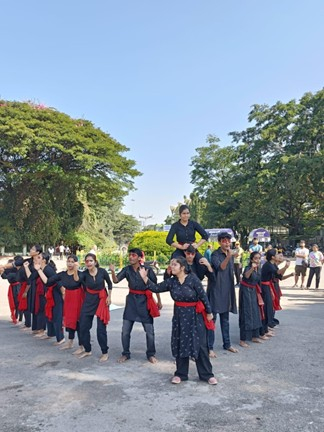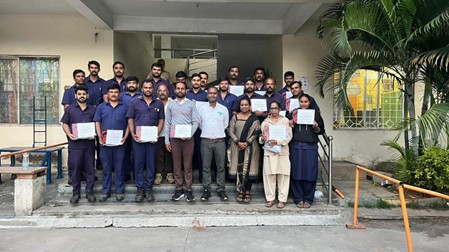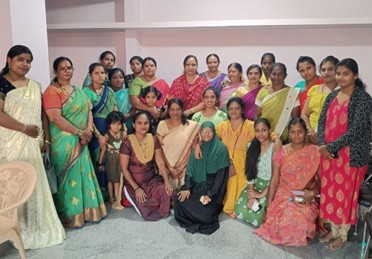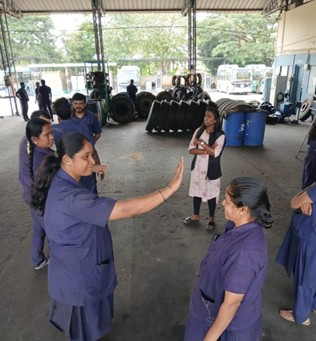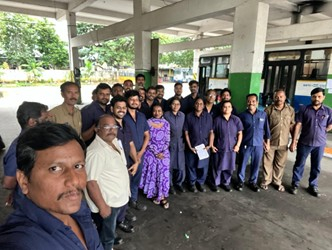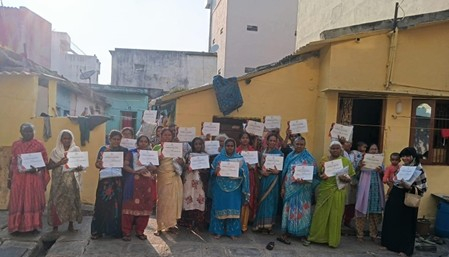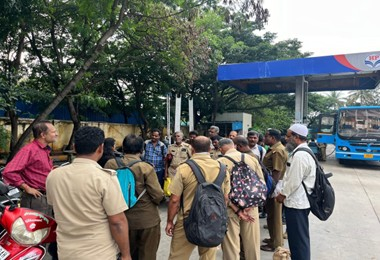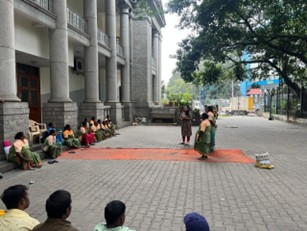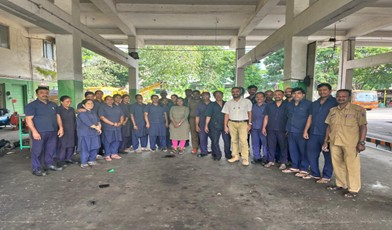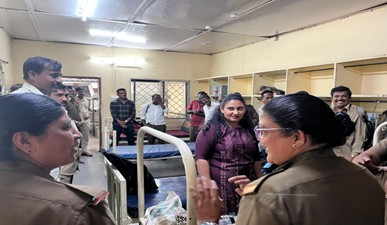Active Bystanders Initiative Highlights | September 2024 to March 2025
May 6, 2025
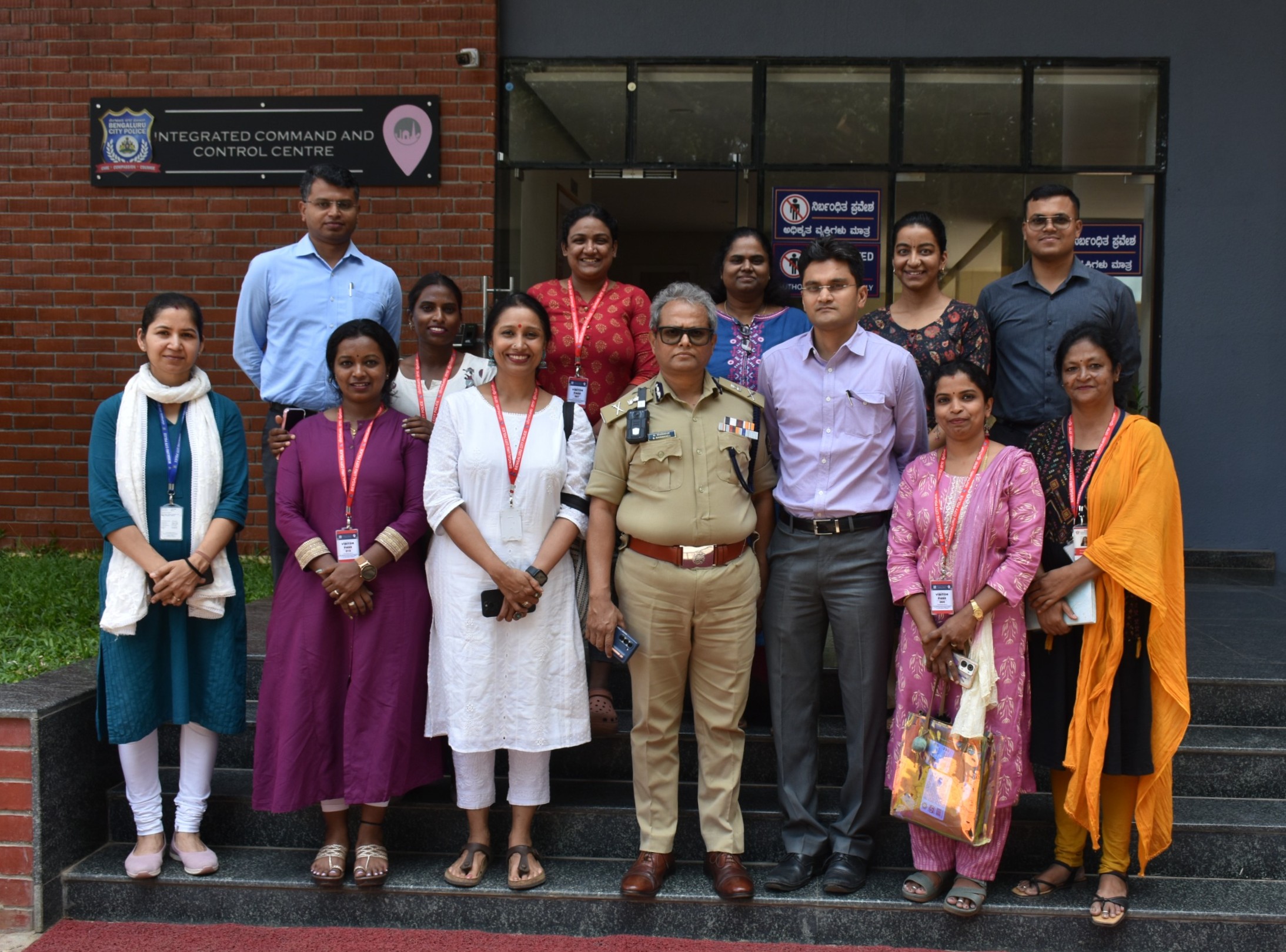 The National Law School of India University in collaboration with the Bengaluru City Police and Durga Foundation conducted training programs on sensitisation for 5,600 participants under the Active Bystanders Initiative. The initiative which is a part of the Bengaluru Safe City Project aimed to empower individuals across different community segments to identify, intervene, and respond effectively in situations of sexual harassment or violence in the city of Bengaluru.
The National Law School of India University in collaboration with the Bengaluru City Police and Durga Foundation conducted training programs on sensitisation for 5,600 participants under the Active Bystanders Initiative. The initiative which is a part of the Bengaluru Safe City Project aimed to empower individuals across different community segments to identify, intervene, and respond effectively in situations of sexual harassment or violence in the city of Bengaluru.
Through targeted sessions, street plays, and community visits, this initiative has fostered a culture of proactive bystander behaviour, therefore contributing to safer public spaces. During the course of intervention (September 2024 to March 2025), bystanders from diverse communities, including auto drivers, cab drivers, bus drivers, street vendors, garment factory workers, domestic helpers, security guards, construction workers, and BBMP employees were identified and equipped with the necessary information and skills. These sessions were organised across various police station limits situated within the city.
The final report was submitted to Mr. B. Dayananda, IPS, Commissioner of Police, Bengaluru City, on May 14, 2025.
Implementation Approaches
- Active Bystander Behaviour Training Sessions:
These interactive sessions equipped participants with the skills to identify and intervene in situations of sexual harassment in public places. The participants were informed about the concept of harassment, its types, and impact, emphasising the emotional and societal consequences of inaction. Additionally, these sessions included role-play activities to help participants explore and refine practical intervention strategies. The participants were informed about the DARE framework (Distract, Address, Rally, Extend) which consists of actionable steps for intervention. - Community Visits:
Apart from the structured sessions, community visits were organised to cover a diverse group of individuals. These visits primarily focused on shopkeepers, roadside vendors, and domestic workers. - Street Plays:
In order to spread awareness, street plays were organised in different parts of the city. The play, titled “Teesri Aankh”, focused on the themes of domestic violence, sexual harassment, and gender-based violence. The plays were delivered in multiple languages depicting different scenarios of violence and effective intervention strategies.
Observations
During the sessions with security guards, drivers, street vendors, gig economy workers, and BBMP employees, it was observed that they possessed a nuanced understanding of active bystander behaviour. While many participants expressed a natural willingness to intervene when someone was in distress, they often did not consciously categorise it as active bystander intervention or place it within the broader context of ensuring safety in public spaces for women. Instead, they viewed it as an action they might take in favourable circumstances, rather than a consistent responsibility to intervene in such distress situations. This perspective was shaped by their personal experiences or those of people they knew, where actively intervening in a situation had sometimes led to negative consequences. These experiences influenced their decision-making and highlighted the necessity of building their confidence and providing them with tools to intervene effectively. Participants were vocal about their understanding on why such incidents happen and this led to a discussion on gender stereotypes, prejudices and victim blaming.
Interactions with women unearthed interesting observations. They empathised with the idea of intervening in stressful situations because of their own personal experiences. This personal connection to the subject allowed them to quickly grasp the importance of recognising and acting upon signs of harassment or violence.
On the other hand, male participants associated active bystander behaviour with the safety and well-being of their family members, particularly female relatives. Their willingness to intervene is frequently framed within the context of protecting their mothers, sisters, wives, or daughters, showing a familiar lens through which they approach the topic.
When asked about the ideal way to respond to harassment in public places, the majority suggested that the perpetrator should be physically confronted or beaten up. While this might seem like the simplest and most immediate solution from their perspective, it can often escalate into further complications, such as mob violence. Additionally, some participants justified violence against women by citing factors such as how they dressed or their presence in certain places at times deemed unsafe. These attitudes reflected deep-seated gender biases and highlighted the need for more conversations around victim-blaming and societal prejudices.
Through our sessions, we aimed to foster a deeper understanding of appropriate responses. It also opened a pathway for participants to assess the prejudices they hold and to begin unlearning a bit in the process. Participants were encouraged to assess situations critically and decide on the most suitable course of action — whether to intervene directly, rally others to support the intervention, or escalate the matter to the police. By providing clarity on what to do when witnessing harassment, the initiative sought to empower individuals to make informed decisions, ultimately increasing the likelihood of active bystander intervention in public spaces.


